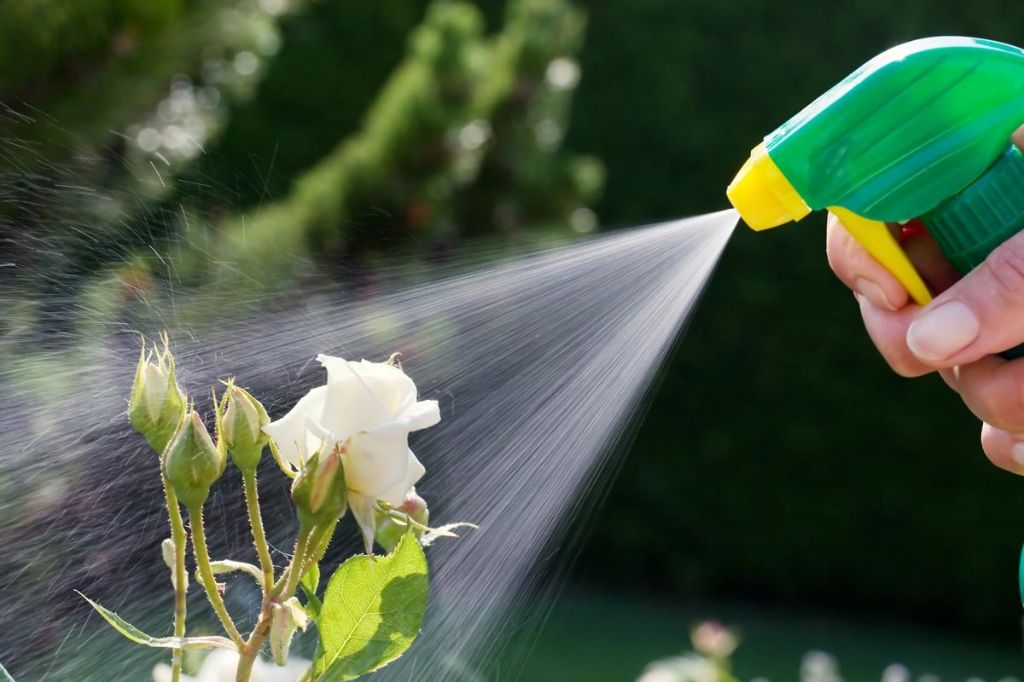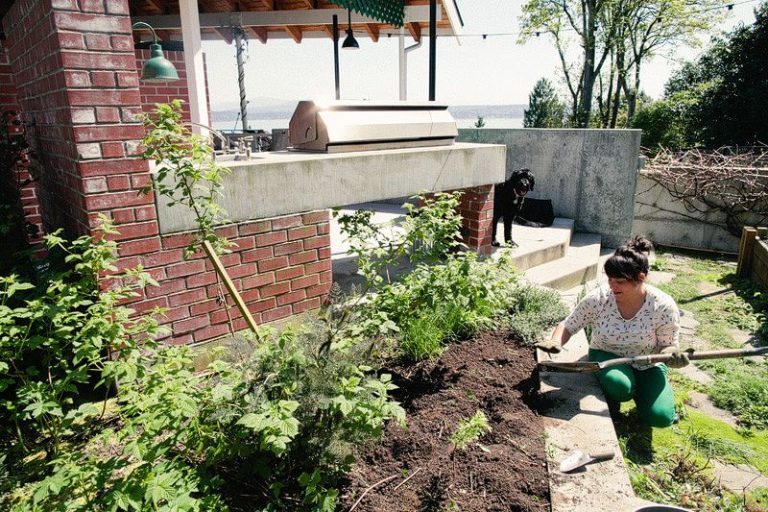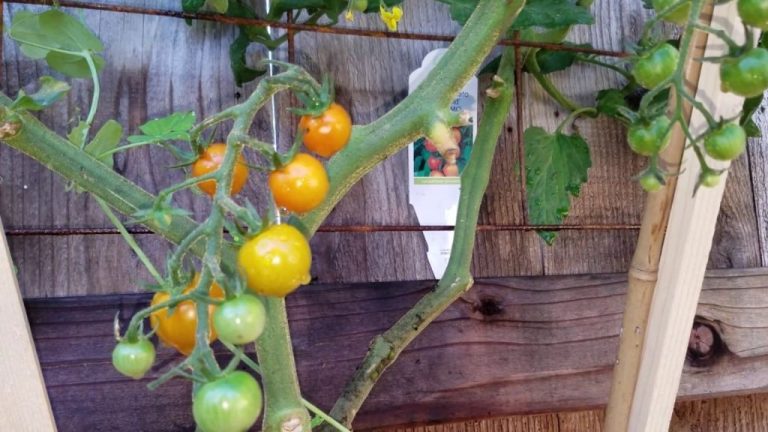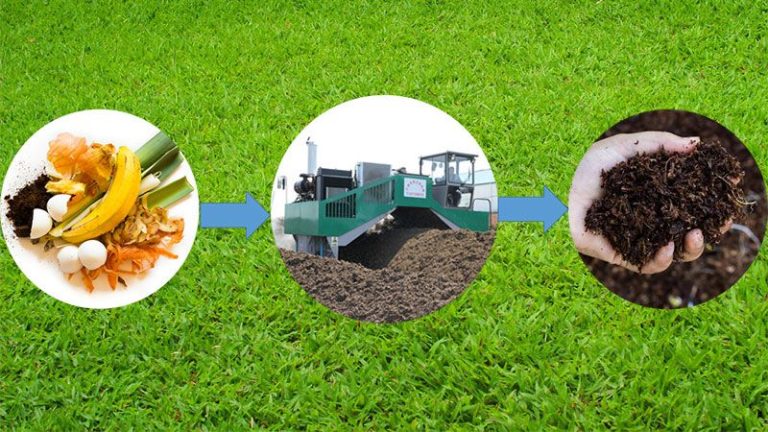Organic Pest Control Methods For A Healthy Garden

Organic pest control has become increasingly important for home gardeners who want to grow healthy plants without using synthetic chemicals. Not only are organic methods better for the environment, reducing soil and water contamination, but they can also produce robust plants and high yields.
This guide will cover the most effective organic approaches to controlling common garden pests. Methods that will be explored include removing pests by hand, using row covers, applying organic sprays, releasing beneficial insects, using organic baits and traps, and more. The focus will be on reducing or eliminating pests through prevention and natural techniques in order to maintain an ecological balance in the garden.
Implementing organic pest control not only eliminates the health risks of chemicals for families and pets, but also promotes biodiversity and supports populations of beneficial pollinators and predator insects.
By using sustainable solutions that work in harmony with nature, gardeners can grow bountiful harvests of fruits, vegetables, and flowers while protecting the soil, air, and water.
Remove Pests by Hand
One of the simplest organic pest control methods is to manually remove pests from plants by hand. Regularly inspect plants, at least once a week, looking carefully on the undersides of leaves and along stems for any signs of pests like insects, mites, or larvae. Use a magnifying glass to spot tiny pests. Remove any pests you find by hand and drop them into a container of soapy water to kill them. For soft-bodied insects, you can simply crush them between your fingers.
For proper hand removal technique, use your fingers or tools like tweezers or forceps to gently pick pests off plants. Try to avoid damaging the plant in the process. Q-tips work well for gently dabbing very small insects. Take care when removing thorny pests like caterpillars to avoid being stung or irritated. Wear gloves if needed. Drop any collected pests into a sealable container of soapy water to kill them. Remember to empty and clean the container afterwards.
Regular hand removal can control pest populations before they get out of control. Just be diligent about regular plant inspections and quick pest removal. Focus extra attention on the undersides of leaves and new growth.
Sources:
https://extension.okstate.edu/fact-sheets/earth-kind-gardening-series-mechanical-pest-controls.html
Use Row Covers
Row covers provide an effective organic pest control method by creating a physical barrier over plants that prevents insect pests from reaching them. Row covers are made from lightweight, breathable materials like spunbonded polyester, polypropylene, or other synthetic fabrics that allow air, light, and water through while keeping pests out.
Some benefits of using row covers include:
– Protecting plants from insect pests like cabbage moth, carrot fly, flea beetles, and potato beetle that chew on leaves and damage fruit.
– Preventing insect egg laying and feeding on plants during crucial developmental stages.
– Allowing earlier planting and extending seasons by protecting plants from frost.
There are a few main types of row cover materials:
– Floating row covers like Agribon or Reemay are lightweight polyester fabrics that rest directly on top of plants. They provide insect pest control and frost protection down to around 25-30°F.
– Heavier row cover fabrics like Typar and DeWitt offer durability for repeated use. However, they require hoop supports above plants.
– Mesh nettings also require hoop supports but offer ventilation on hot days while still keeping pests off plants.
Row covers should be installed over plants soon after seeding or transplanting. Anchor fabric edges with weights, boards, or soil to prevent the wind from blowing covers off. Leave covers on until plants start to flower, then remove to allow pollination.
Sources:
Using Row Covers in the Garden – UNH Extension
Floating Row Cover – Wisconsin Horticulture
Apply Organic Sprays
Organic oil and soap sprays can be an effective method for controlling pests in your vegetable garden. These sprays work by coating soft-bodied insects like aphids, mites, and whiteflies to deter and kill them. The natural oils also disrupt the growth and reproduction of these pests.
You can easily make DIY organic sprays at home with ingredients like vegetable oil, Castile soap, garlic, and chili peppers. A basic homemade insecticidal soap spray can be created by mixing 1 1⁄2 teaspoons of Castile liquid soap with 1 cup of vegetable oil. Add 2-8 teaspoons of the soap-oil mixture to 1 quart of water and thoroughly mix. Shake the spray bottle before each application to disperse the oil (Source 1).
For an oil spray, combine 1 cup vegetable oil with 1 tablespoon mild liquid soap. Add 2-8 teaspoons of the mixture to 1 quart of water. Other homemade options include garlic oil, hot pepper wax, and neem oil sprays. Always follow recipes carefully and test on a small area first before widespread spraying (Source 2).
Only apply these natural sprays early in the morning or at dusk since the oils may burn leaves in hot, direct sunlight. Completely coat the tops and bottoms of leaves as well as stems and branches where insects live. Reapply every 5-7 days for 2-3 weeks to break the reproduction cycle. Be sure to cover edible plant parts thoroughly but wait until any spray residue has dissipated before harvesting produce.
Use Organic Pest Predators
There are many beneficial insects that can naturally keep pest populations under control in your garden. Insects like ladybugs, lacewings, praying mantis, and trichogramma wasps feed on common garden pests like aphids, mites, thrips, caterpillars, mealybugs and more. You can buy populations of these predatory insects from garden stores and online retailers and release them in your garden and greenhouse.
Ladybugs are one of the most popular predatory insects to buy and release as they feed on a wide variety of soft-bodied pests. Look for ladybug eggs or larvae which are more likely to stick around your garden rather than buying adult ladybugs which often fly away. Lacewings are also great aphid predators. Their alligator-like larvae have huge appetites for soft pests.
Praying mantis egg cases contain hundreds of young that will hatch in your garden. They eat a variety of insects including caterpillars, beetles, grasshoppers and more. Trichogramma wasps parasitize moth and butterfly eggs, providing natural control before the caterpillars can damage plants.
Follow the supplier’s instructions carefully when releasing predatory insects. Usually the best times are early morning or evening. It’s also important to provide habitat like flowering plants that offer nectar and pollen to help support adult predatory insects.
Aside from purchasing and releasing predator insects, you can also attract natural predators already present in your area. Planting nectar-rich flowers will draw in predator bugs like lady beetles. You can also provide habitat for spiders, who help control many pests. Avoiding broad-spectrum insecticides is key, as these products kill beneficial predators as well as pests.
Apply Diatomaceous Earth
Diatomaceous earth (DE) is a powder made from the fossilized remains of tiny, aquatic organisms called diatoms. DE particles have sharp edges that can cut and scratch insects’ exoskeletons, causing them to lose water and die from dehydration (Source). DE is effective against a wide range of pests like ants, cockroaches, fleas, slugs, and snails.
To use DE for pest control, apply a thin layer on top of the soil around plants. Spread DE with a duster designed for applying powders. Apply when there are no strong winds to avoid the powder blowing away. Reapply after watering or rain. DE is non-toxic to pets and humans, but avoid breathing in the dust during application. DE is safe for edible gardens, but rinse produce thoroughly before eating. Only apply food-grade DE, not DE for pool filters (Source).
Use Organic Baits and Traps
Organic baits and traps can be an effective way to control common garden pests like slugs, snails, earwigs, and ants without using toxic chemicals. There are a variety of organic bait and trap options available.
For slugs and snails, one of the most popular organic baits is beer. You can make homemade beer traps by filling the bottom of containers like yogurt cups with beer and placing them at ground level in affected areas of the garden. The smell of the beer will attract slugs and snails which will crawl in and drown. Maintain these traps by emptying and refilling with new beer every few days.
Another organic bait option is to set out small containers filled with yeast-sugar water, which attracts slugs and snails. Add 1 teaspoon of active dried yeast and 1 teaspoon of sugar to a small cup of warm water. Place these containers around the garden. The yeast fermentation process gives off CO2 which draws in the pests [1].
For earwigs, make simple traps from rolled up newspapers, corrugated cardboard, or bamboo tubes placed on their side. Earwigs will take shelter in these tubes during the day. Collect and dispose of the tubes in soapy water to get rid of the trapped earwigs. You can also use pheromone traps like the Organic Earwig Trap which contains an earwig aggregation pheromone [2].
Ant traps like Terro Liquid Ant Bait rely on borax as the active ingredient to kill ants in a contained, non-toxic way. Place these traps along ant trails or near nests. The ants are drawn to the sweet liquid, which they consume and take back to the rest of the colony, resulting in control of the entire nest.
Always follow instructions on trap and bait products for proper placement and maintenance. Traps and baits generally provide the best results when used along with other organic methods to control pests and maintain a healthy garden.
Apply Beneficial Nematodes
Beneficial nematodes are tiny worm-like organisms that naturally occur in soil and can help control soil-dwelling pests like grubs, cutworms, and others. Beneficial nematodes enter the bodies of pest insects and release a bacteria that kills them within 24-48 hours (https://lawnlove.com/blog/beneficial-nematodes-for-pest-control/). The two most common species used in pest control are Heterorhabditis bacteriophora and Steinernema feltiae.
To apply beneficial nematodes, first mix them with water according to package directions. You can apply using a watering can, hose-end sprayer, backpack sprayer, or through an irrigation system (https://www.arbico-organics.com/category/beneficial-nematodes-faqs). Water the area before and after application. Apply nematodes in the evening or early morning when temperatures are cooler. The soil should be moist but not saturated.
Apply beneficial nematodes when pests are active, usually spring through fall. You may need to apply more than once per season. Wait 7-10 days between applications. Store nematodes in the refrigerator until use and avoid exposing them to sunlight. Follow all label directions for effective pest control.
Encourage Natural Predators
Encouraging natural predators like birds, bats, frogs, and lizards to take up residence in your garden can provide free and chemical-free pest control. Here are some tips for attracting and keeping natural predators in your garden:
Provide habitat for natural predators by landscaping your garden with plants, trees, and shrubs that offer shelter and places to nest. Evergreen trees, thick hedges, and dense ground cover plants are ideal. You can also install bird houses, bat houses, and frog ponds to give natural predators a home base.
Offer water sources like ponds, small pools, fountains, or bird baths. Natural predators need to drink water, and having a consistent water source in your garden will draw them in.
Stop using chemical pesticides, herbicides, and insecticides, which can be harmful or fatal to natural predators like birds, frogs, and beneficial insects. Embrace organic gardening practices instead.
Let fallen leaves, mulch, and dead wood accumulate in garden beds and unmanaged corners. This provides cover and habitat for frogs, lizards, ground beetles, and other beneficial predators.
Plant native flowers and herbs that will attract natural predators by providing pollen and nectar food sources. Good choices include yarrow, coneflowers, milkweed, and basil.
By taking these steps to welcome natural predators, you can enlist nature’s help in keeping pests at bay and create a healthy garden ecosystem.
Prevent Pests through Garden Maintenance
Proper garden maintenance is key for preventing pests naturally. By promoting healthy soil and plant growth, pests are discouraged from attacking. Here are some tips:
Practice crop rotation – Growing the same crops in the same spot year after year allows pests and diseases to build up in the soil. Rotate plant families between growing seasons to disrupt pest life cycles. For example, follow legumes with brassicas or solanums. Crop rotation has been shown to be an effective organic pest control method [1].
Maintain healthy soil – Pests are attracted to stressed or diseased plants. Building organic matter by adding compost improves soil structure and provides nutrients for strong plant growth. Healthy plants can better withstand and outgrow minor pest damage. Test soil regularly and amend accordingly for optimal fertility.
Remove plant debris – Fallen leaves, dead plants, and rotting fruits harbor insect eggs and fungal spores. Clear your garden of debris to eliminate places where pests can overwinter. Compost plant matter first or dispose of it. Keeping the garden tidy limits pest hiding spots.
Remove diseased plants immediately – Plants infected with viruses, fungi or bacteria can spread issues quickly to healthy plants nearby. Inspect regularly and pull out and destroy any sick plants before pests move in.
Cleaning tools and equipment – Sterilize pruning shears and other garden tools to prevent spreading diseases between plants. A diluted bleach solution works well for disinfecting.






